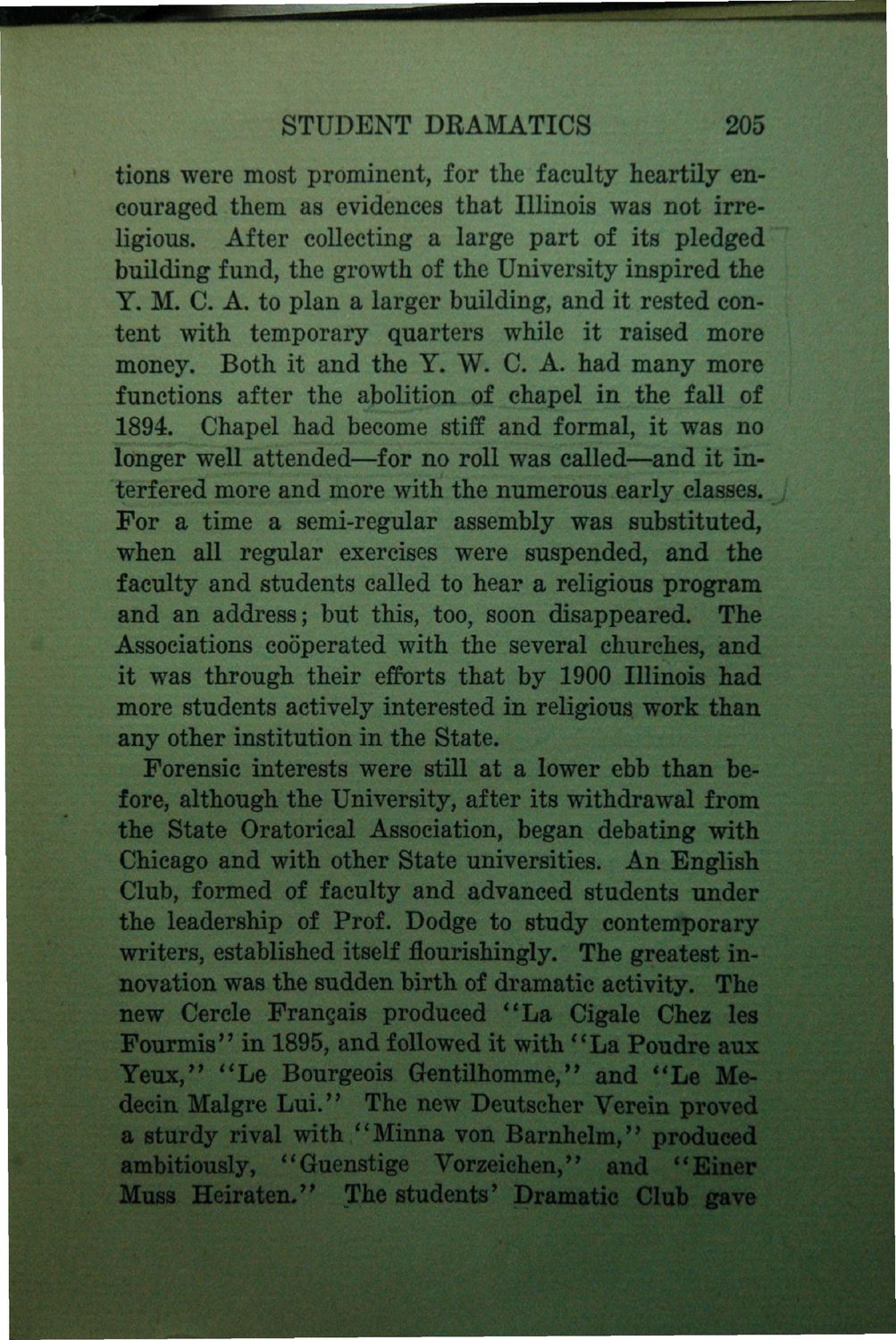| |
| |
Caption: Book - History of the University (Nevins)
This is a reduced-resolution page image for fast online browsing.

EXTRACTED TEXT FROM PAGE:
STUDENT DRAMATICS 205 tions were most prominent, for the faculty heartily encouraged them as evidences that Illinois was not irreligious. After collecting a large part of its pledged building fund, the growth of the University inspired the Y. M. C. A. to plan a larger building, and it rested content with temporary quarters while it raised more money. Both it and the Y. W. C. A. had many more functions after the aJ)olitioj3L of chapel in the fall of 1894. Chapel had become stiff and formal, it was no longer well attended—for no roll was called—and it interfered more and more with the numerous early.classes. For a time a semi-regular assembly was substituted, when all regular exercises were suspended, and the faculty and students called to hear a religious program and an address; but this, too, soon disappeared. The Associations cooperated with the several churches, and it was through their efforts that by 1900 Illinois had more students actively interested in religious work than any other institution in the State. Forensic interests were still at a lower ebb than before, although the University, after its withdrawal from the State Oratorical Association, began debating with Chicago and with other State universities. |f An English Club, formed of faculty and advanced students under the leadership of Prof. Dodge to study contemporary writers, established itself flourishingly. The greatest innovation was the sudden birth of dramatic activity. The new Cercle Francais produced "La Cigale Chez les Fourmis" in 1895, and followed it with "La Poudre aux Yeux," "Le Bourgeois Gentilhomme," and "Le Medecin Malgre Lui." The new Deutscher Verein proved a sturdy rival with^Minna von Barnhelm,':' produced ambitiously, "Guenstige^Vbrzeichen," and "Einer Muss Heiraten."J|:The students' Dramatic Club gave
| |